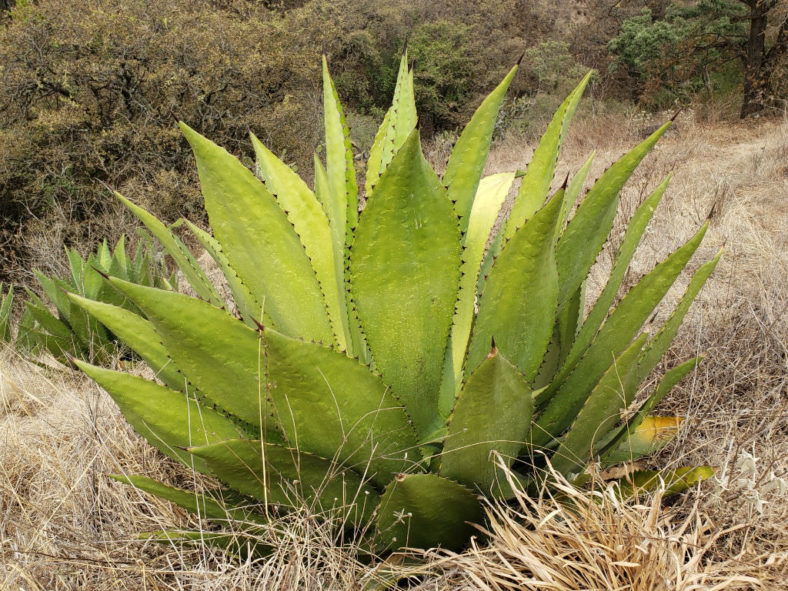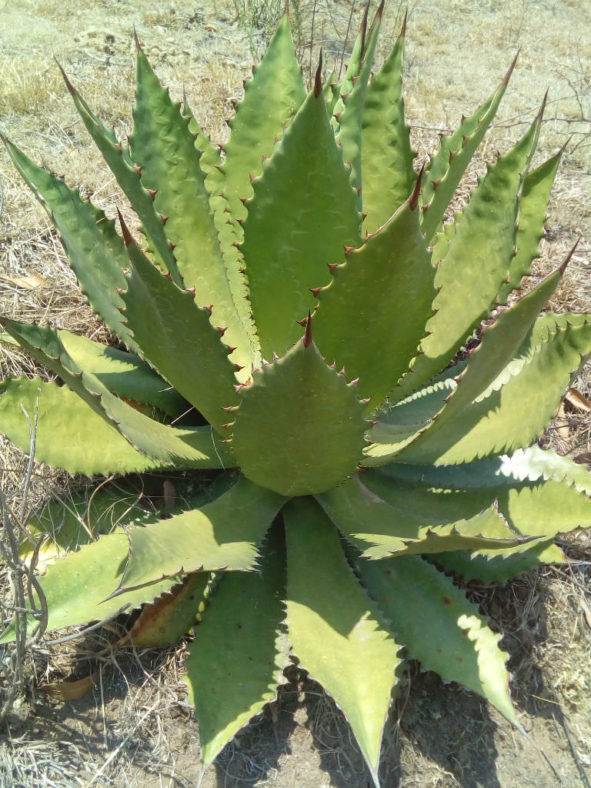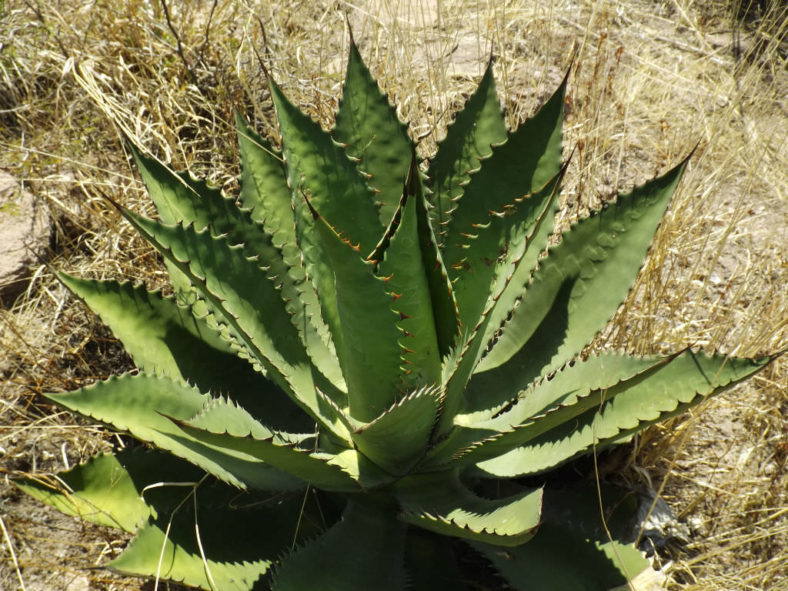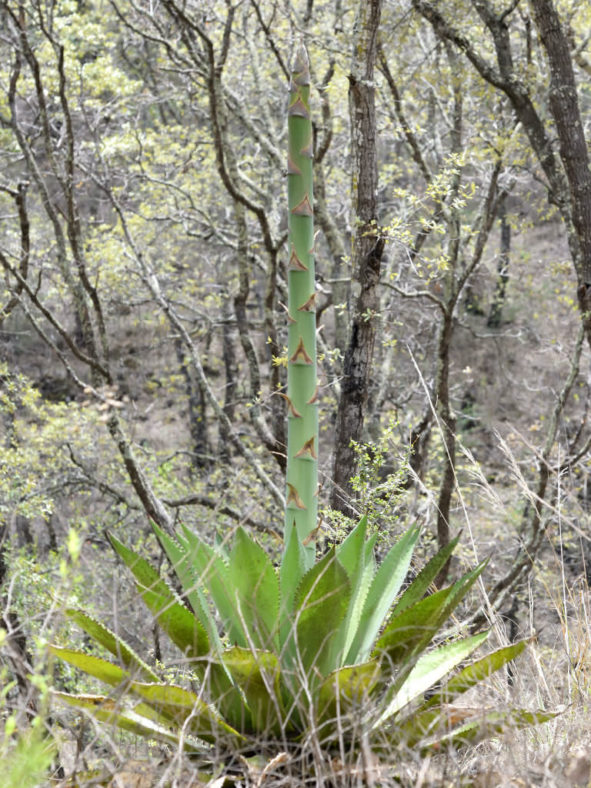Scientific Name
Agave guiengola Gentry
Common Name(s)
Locally known as Maguey Alto or Maguey Bruto
Synonym(s)
Agave inaequidens subsp. inaequidens
Scientific Classification
Family: Asparagaceae
Subfamily: Agavoideae
Genus: Agave
Etymology
The specific epithet "inaequidens (in-AK-wih-dens)" means "having unequal teeth or spikes" and refers to the margins of the leaves, which are irregularly toothed.
Origin
Agave inaequidens is native to Mexico. It is the most abundant species in the Trans-Mexican Volcanic Belt.
Description
Agave inaequidens is a monocarpic succulent that forms a short-stemmed rosette of light green to yellow-green leaves. The rosette can grow up to 5 feet (1.5 m) tall and 11.5 feet (3.5 m) in diameter. The leaves are more or less lance-shaped with dark brown dimorphic teeth along the margins and stout, deeply channeled above, dark brown terminal spine. They can measure up to 4.3 feet (1.3 m) long and 10 inches (25 cm) wide.
After 12 to 25 years, usually from spring to summer, the rosette produces a tall, unbranched spike with yellow flowers. The flower spike can grow up to 31 feet (9.5 m) tall, while the flower can reach a length of up to 2.8 inches (7 cm). The fruits are elongated brown capsules with shiny black seeds. They can grow up to 3 inches (7.5 cm) long and 1 inch (2.5 cm) in diameter.

How to Grow and Care for Agave inaequidens
Light: Agaves require full sun to partial shade. If you are growing an A. inaequidens indoors, choose a bright, sunny window with as much sun as possible. These plants love going outside from spring to fall. A plant that is grown in low-light conditions becomes etiolated.
Soil: Agaves will tolerate most soils as long as they have good drainage but prefer sandy or rocky soil.
Hardiness: During the growing season, Agaves like warm temperatures, while in winter, when resting, they like cooler temperatures. A. inaequidens can withstand temperatures as low as 25 to 50 °F (-3.9 to 10 °C), USDA hardiness zones 9b to 11b.
Watering: Mature plants are very drought tolerant. Water thoroughly your A. inaequidens from spring to fall when the soil becomes dry. In winter, water sparingly about once a month. Plants in containers require more frequent watering than those in the ground.
Fertilizing: Give your plant a small amount of fertilizer in the spring during the first two years.
Repotting: When the pot becomes full of roots, the plant has become pot-bound. If you notice your A. inaequidens becoming pot-bound, repot it with fresh soil in a pot slightly larger than the old one.
Propagation: This species is not known to produce offsets, so propagation is by seeds. Sow the seeds in spring in a container with well-draining soil.
Learn more at How to Grow and Care for Agave.
Toxicity of Agave inaequidens
A. inaequidens is not toxic to humans but may be mildly poisonous to children and pets.
Links
- Back to genus Agave
- Succupedia: Browse succulents by Scientific Name, Common Name, Genus, Family, USDA Hardiness Zone, Origin, or cacti by Genus
Photo Gallery
Click on a photo to see a larger version.


